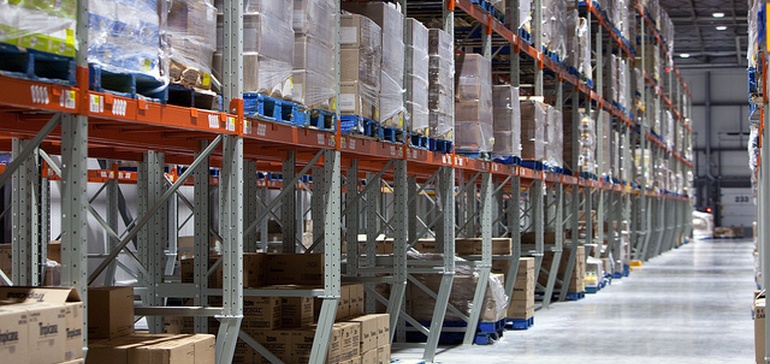
“Warehouses are changing because business is changing.”
It’s no secret that consumer expectations coupled with the rise of e-commerce have caused disruptions throughout the supply chain. Warehouses and distribution centers are no exception. “Warehouses are changing because business is changing,” Matthew Butler, director of the industry strategies team at JDA, told Supply Chain Dive.
Speed is important, of course, but Lindsay Olla, VP of Market & Client Relations at Optricity said that without quality, it doesn’t matter.
“Customization, once only seen in manufacturing, is becoming more commonplace in the warehouse, and the pressure of competitive pricing is ever-present,” Olla told Supply Chain Dive in an email. “Noting these evolving demands, modern warehouses are incorporating major trends to achieve operational success; enhancing the customer experience, implementing smart integrations across systems, and utilizing advanced planning tools to support sustainability.”
Modern warehouses are incorporating physical changes, as well as operational ones. Here are a few of the trends that warehouses are – or soon will be – adopting to remain efficient and competitive links in an ever-evolving supply chain.
New problems require new designs
No one should be shocked that, at the forefront of warehouse change, are automation and technology. It’s especially true at juncture points: the interchanges where traditional and emerging technologies meet.
“Software, hardware, material handling and soft automation systems meet newer, disruptive technologies such as drones, optical readers, augmented reality, mobile and robotic devices,” Olla said. “Smart integrations, seamless interfaces and the communication of data between systems will be critical to yield the productivity and performance necessary for the modern warehouse.”
Modern warehouses are being customized to handle smaller order with more frequent shipping, Olla said. The customization is changing the way workers are picking as well as the layouts of warehouses designed to ensure productivity remains at required levels.
“The technology to support these… changes has become essential, and the ability to run actual orders through a virtual warehouse creates a game-changer, ensuring a balanced warehousing ecosystem with desired results,” Olla said.
The interiors of warehouses and distribution centers also are changing into modern iterations. As an example, clear height – the height to which product can be safely stored (only as high as sprinklers, lights and fans) – is becoming more important.
Now, “retailers thank like distributors, distributors think like 3PLs and 3PLs are saying, ‘How do I provide for my customers?'”
Matthew Butler
Director, Industry Strategies Team, JDA
With demand for increased volume, warehouses are being built with much higher clear heights, Tripp Eskridge, managing director of the industrial & logistics project management business at CBRE, told Supply Chain Dive. Where once, 20-foot clear heights were common, new warehouses are reaching 40 feet.
“That increases the [construction] cost because of [mandated] fire protection design and roof slopes and drainage design,” Eskridge said. “And, as automation increases, there are more mezzanines in the space.”
At the opposite end of the ceiling, of course, is the floor. Many new warehouses are being made with engineered concrete floors, which are denser than standard concrete and contain fewer joins and saw cuts to reduce buckling. These “shrink reducing concrete floors will reduce the number of floor joints and the number of saw cuts by 70%,” Eskridge explained. “That means smoother rides for the forklifts.”
As elevated clear heights give warehouses more volume and automated technology creates more heat, heating ventilation and air conditioning systems (HVAC) must also be updated.
In some climates, warehouses are adding high-volume, low-speed (HVLS) ceiling fans, which are 7-feet or more in diameter. They move more air than a smaller, high-velocity fan. Because of automation, it takes increased power to run the facility’s conveyers. “The more power that’s in, the hotter it’ll get, so air conditioning becomes more necessary with more equipment,” Eskridge said.
Even lighting is being altered. Whether for cost savings or environmental concerns new warehouses are being built with more skylights to help with power costs – California, for one, requires them. Another trend is “daylight harvesting,” which turns off lights in spaces where they aren’t needed.
Facilities are changing outside the four walls, too
Docks are busy, sometimes dangerous work sites. There, too, automation is making a mark. There is much greater adoption of automated dock equipment packages with vehicle safety restraints, according to Eskridge. “Push a button to set up the dock equipment. It’s safer and easier,” he said.
In addition, cross-docking is becoming more popular as an efficient solution. It’s simply unloading goods from an incoming vehicle and loading directly onto outbound vehicles with little or no warehousing time.
JDA’s Butler said warehouse managers need to ask themselves some questions to make the dock more efficient: “How do I prepare the pallet as efficiently as possible? How do I release product in the warehouse to build the pallet? How can I be sure I’m packing efficiently for the drivers?”
In real estate, location is key. More warehouses and distribution centers are popping up closer to populated areas, Olla pointed out. This helps meets the growing demands of quicker deliveries and, in the case of food products, ensures the freshest items reach the consumer.
“The footprint of these new locations are trending to be smaller in scale, as these facilities are and will be placed in strategic locations with the associated SKU mixes to match the demographics of the networks of stores and consumer they serve,” Olla said.
Outside the four walls, or within, warehouse management is seeing a shift in strategic thinking. Materials handling is learning to put the customer first, despite previous limitations.
Or, as Butler put it, now “retailers think like distributors, distributors think like 3PLs and 3PLs are saying, ‘How do I provide for my customers?”
Source: Supply Chain Dive
